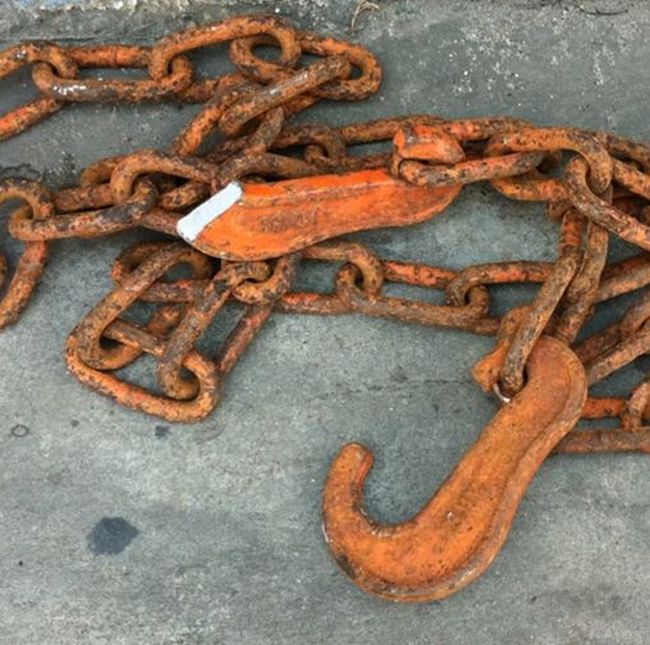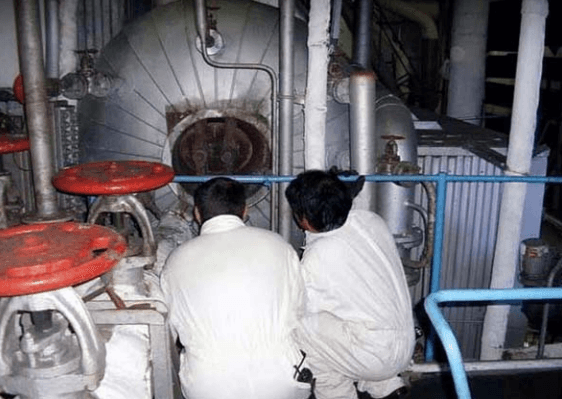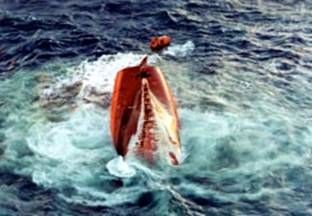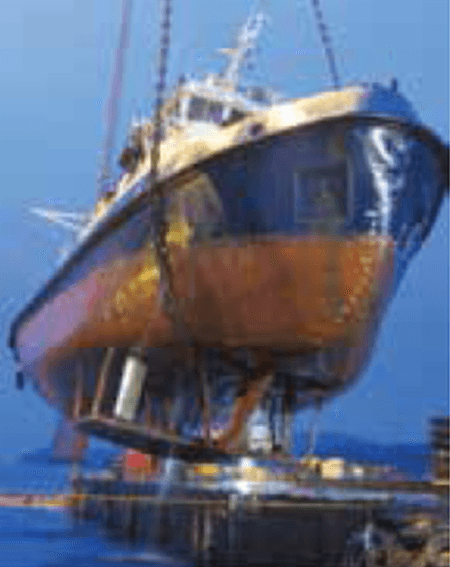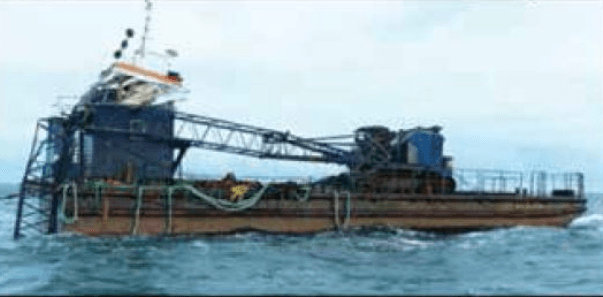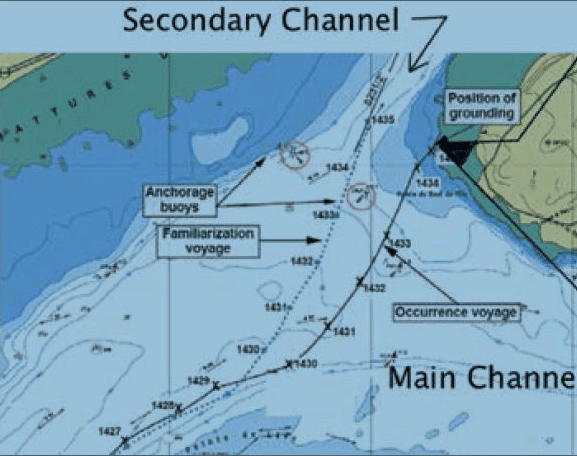Real Life Incident: Ship Accommodation Ladders With Improvised Secondary Means Of Support
The Australian Maritime Safety Authority (AMSA) notes that, although there are no requirements under SOLAS regulation II-1/3-9 for the rigging of secondary means of support to accommodation ladders and no standards in MSC. 1/Circ1331 for the construction, maintenance and operational testing of those arrangements, rigging of a secondary means of support to accommodation ladders, particularly where the accommodation ladder is suspended, has become common practice in some Australian ports.
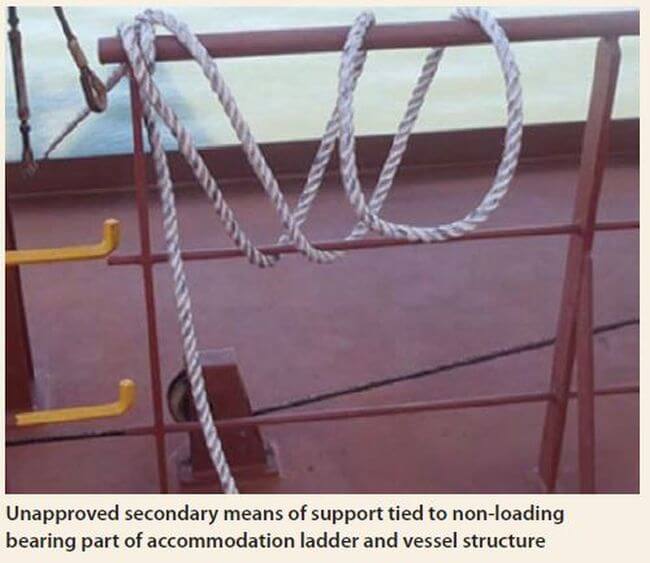
AMSA has observed that secondary means of support arrangements have consisted of the following:
- Steel wire, synthetic or natural fibre ropes tied or otherwise connected to the accommodation ladder and a part of the vessel’s structure
- Synthetic or natural fibre rope roved through pulley blocks and connected to the accommodation ladder hoisting arrangements or part of vessel’s structure
- Steel chains or wire ropes with or without a bridle connected to a part of the vessel’s structure or suspended from the vessel’s stores crane or bunker hose davit.
According to AMSA, in many cases the secondary means of support are inadequate for their intended purpose and in fact introduce unacceptable hazards and risks. The inadequacies include:
- Connections to vessel’s cranes or davits with insufficient safe working limit (SWL)
- Attachments to non-load-bearing parts of the accommodation ladder and vessel structure
- Adequate tensile strength of ropes, wires, pulleys and fittings.
- Additionally, some arrangements are not easily adjustable and add a further risk to safety when the accommodation ladder is lowered or raised to compensate for draught changes or due to tidal variation.
- There are often no policies, procedures or instructions contained in the safety management system for the use and maintenance of the secondary means of support arrangements and crew have been unable to demonstrate proficiency in the use of these arrangements. AMSA has noted several incidents and accidents due to these improvised methods.
Lessons learned
- If a secondary means of support is desired, a risk assessment should be undertaken on board in line with the vessel’s safety management system.
- Procedures for the fitting, maintenance and operation of the secondary means of support arrangements should be included in safety management system procedures and crew should be inducted and trained in the use of these arrangements.
- Good seamanship and reasonable judgement is a standard in itself.
Press Release: nautinst.org
Do you have info to share with us ? Suggest a correction
About Author
Marine Insight News Network is a premier source for up-to-date, comprehensive, and insightful coverage of the maritime industry. Dedicated to offering the latest news, trends, and analyses in shipping, marine technology, regulations, and global maritime affairs, Marine Insight News Network prides itself on delivering accurate, engaging, and relevant information.

About Author
Marine Insight News Network is a premier source for up-to-date, comprehensive, and insightful coverage of the maritime industry. Dedicated to offering the latest news, trends, and analyses in shipping, marine technology, regulations, and global maritime affairs, Marine Insight News Network prides itself on delivering accurate, engaging, and relevant information.
- Real Life Incident: Vessel Collision in Good Visibility
- Real Life Incident: Severe Injury To Deck Crew While Leaving Berth
- Real Life Incident: Departure Damage in Very Restricted Waterway
- Real Life Incident: Low Situational Awareness Has High Impact Consequence
- Real Life Incident: Fouled Anchor in a Designated Anchorage
- Real Life Incident: Fire On Barge Carrying Scrap Metal Causes $7 Million Worth Of Damage
Latest Case studies Articles You Would Like:
Subscribe To Our Newsletters
By subscribing, you agree to our Privacy Policy and may receive occasional deal communications; you can unsubscribe anytime.










